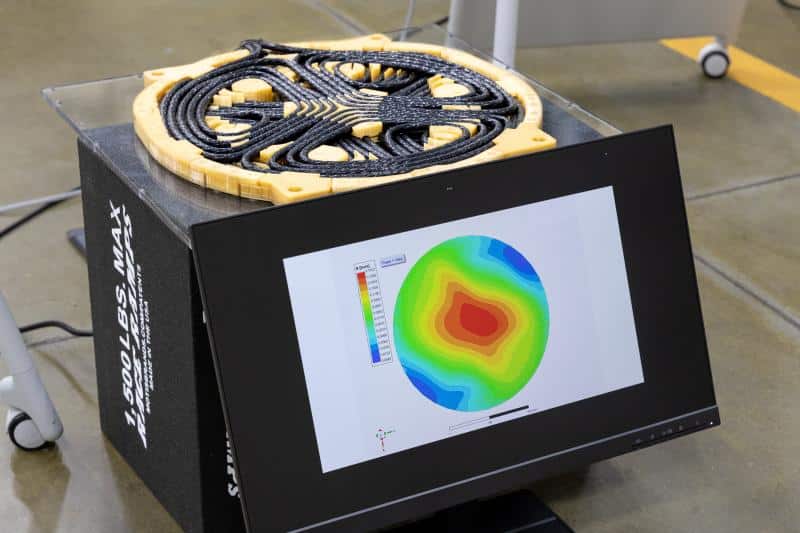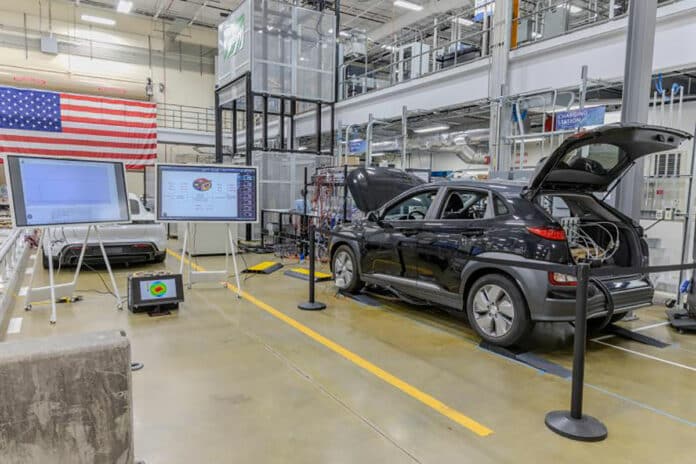Nowadays, wireless power transfer is a common feature in many homes, with people using wireless charging pads for their phones, tablets, and electric toothbrushes, as well as inductive cooktops. The power is transferred using electromagnetic fields, and it’s considered a safe, efficient, and convenient way to charge devices.
However, wireless power transfer hasn’t really taken off in the world of electric vehicles due to the low power levels involved.
Oak Ridge National Laboratory researchers demonstrated that a light-duty passenger electric vehicle can be wirelessly charged at 100-kW with 96% efficiency using polyphase electromagnetic coupling coils with rotating magnetic fields.
The new wireless EV charging system transferred power wirelessly to a Hyundai Kona EV across a five-inch airgap using electromagnetic fields. This technology is similar to the wireless charging of small consumer devices.
ORNL’s polyphase electromagnetic coupling coil’s lightweight and small design allows for the highest power density within the smallest coils possible. The receiver coil was installed in a Hyundai Kona EV, which was parked over a 14-inch diameter polyphase transmitter with a five-inch air gap in between using electromagnetic fields. The system was able to transfer power at 100 kW, with 96% efficiency, which is comparable to what you’d get from a very good cable and plug.

Conventional coil technology in a benchtop lab test has transferred power at 120 kW, but the researchers consider this to be the best that’s ever been tested on a car. The polyphase coil design enables the highest power density within the smallest coils possible, making for a relatively compact and convenient system.
“We’ve achieved the highest power density in the world for a wireless charging system for this class of vehicle,” ORNL’s Omer Onar said. “Our technology reaches power densities 8-10 times higher than conventional coil technology and can increase battery charge state by 50% in under 20 minutes.”
By generating rotating magnetic fields through its phase windings, this new polyphase electromagnetic coupling coil is said to achieve fast and efficient wireless charging for passenger electric vehicles.
“This is a breakthrough achievement and opens the door to fast and efficient wireless charging for passenger electric vehicles,” Onar said.
